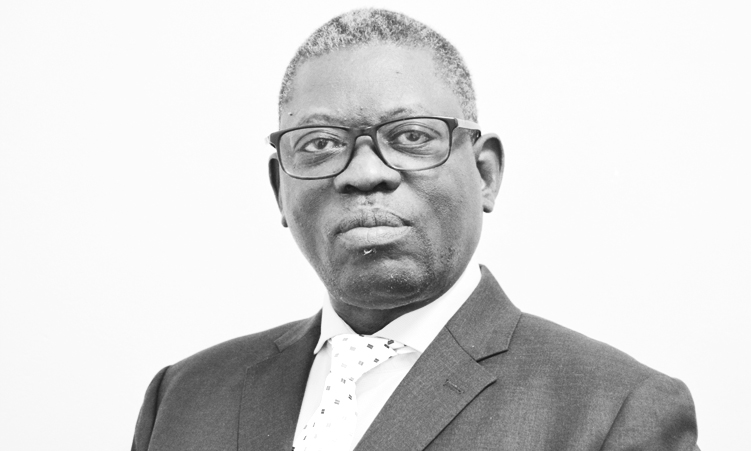It was reported this week that Job Amupanda was considering laying a formal complaint with the media ombudsman over a political cartoon that portrayed him as “sleeping”.The Affirmative Repositioning member of parliament contends that the cartoon does not fairly reflect him as a member of parliament. However, to understand why cartoons exist and, more importantly, why they must continue to exist, we must remember that freedom of expression is a pillar of our democracy.
As someone who deeply respects our Constitution, I believe this complaint is unnecessary and dangerous.SYMBOLIC USEPolitical cartoons, often in the form of caricatures, are not new to Namibia. They have long served as tools for public education and engagement.

A cartoon is not a photograph. It is not meant to tell a full story. It is a caricature, a visual exaggeration, used to simplify complex issues.
It brings humour, irony and sometimes even discomfort but is grounded in something real. It is not done out of malice but to provoke thought, inspire debate and hold the powerful to account.In Namibia, cartoons have historically played a role in demystifying the politics of repression and apartheid, as well as challenging the dominance of racial hegemony during colonial times.
They have shown how art can critique power and reflect society’s frustrations and hopes. For some, a cartoon in a newspaper may be their first point of contact with national issues. Whether poking fun at government policy or highlighting an absent leader, these depictions are grounded in real events, sentiments and criticisms.
They are generally presented in good humour and in the spirit of a healthy democracy. Namibia’s Constitution guarantees freedom of speech and expression, which includes freedom of the press and other media. This freedom is not optional; it is a cornerstone of democracy.
It ensures that every Namibian, whether through pen, speech or sketch, can critique public figures and institutions without fear of retaliation.Cartoons, social media posts, opinion columns and radio broadcasts are valid forms of political expression. To limit them would be to silence the very voices on which democracy depends.
For politicians, who are public servants, scrutiny is not a personal attack, but a necessary, even noble, function of public oversight. Once we begin to silence one voice, it becomes easier to silence others. Democracy must allow critique, even uncomfortable critique.
POLITICIANS AND PUBLIC SCRUTINYThose who seek public office must understand that with responsibility comes visibility. Once elected, politicians no longer belong to themselves alone, they belong to the people. And the people, through the media, have every right to question, challenge and even mock their actions, inaction or silences.
Running for office is not just about making promises. Politicians serve us, not the other way around. For someone like Amupanda, known for loudly standing up against injustice, the cartoon was likely highlighting how quiet he has been on certain pressing issues.
It was not about whether he naps during parliamentary sessions, it was a public question in picture form: Where is the fire we used to see?Filing a complaint over a cartoon would set a troubling precedent. It suggests that satire, one of the oldest forms of political critique, is suddenly off-limits. This is not only dangerous for free speech, it is counterproductive for politicians who should be encouraging public engagement, not policing it.
SILENCE AS THE PUNCHLINELet’s consider the cartoon that sparked this controversy. Yes, Amupanda was depicted as napping. But political cartoons are not meant to be taken literally.
The image was a metaphor, and artistic commentary. The cartoonist, like many citizens, may have observed a contrast between Amupanda’s former fiery activism and his recent silence on critical national matters.Rather than suggesting he physically sleeps in parliament, the cartoon possibly pointed to that perceived change.
That is the nature of political commentary: To ask, sometimes uncomfortably, where are you now?Amupanda chose to interpret the cartoon in its most literal and superficial form, missing its deeper meaning. More troubling is his reaction to this mode of expression. It speaks more to his discomfort with critique than to any malice on the part of the cartoonist.
INTOLERANCE IS THE REAL THREATDemocracy thrives on dialogue, dissent and debate. When politicians begin to attack media freedom, whether through complaints, lawsuits or complaints, they chip away at the very foundation of democratic life.Cartoons may sting.
Commentary may be harsh. But the alternative – a nation where satire is silenced and critique is criminalised – is far more dangerous. We must ask ourselves: Should the media only show politicians at their best, or must it also reflect their weaknesses, silences and contradictions? The answer is clear.
A democracy without robust political discourse is no democracy at all.In the end, intolerance, especially by public figures, poses more of a threat to Namibia than any cartoon could.The people must be allowed to speak, even through drawings.
The real question is not whether public commentary flatters our leaders. It is whether it speaks the truth. And when it does, we must defend it fiercely.
Kaitira Kandjii is a farmer at Okatjombua.The post Let Cartoons Speak: Political Satire is Not an Attack on Democracy appeared first on The Namibian..
Politics

Let Cartoons Speak: Political Satire is Not an Attack on Democracy

It was reported this week that Job Amupanda was considering laying a formal complaint with the media ombudsman over a political cartoon that portrayed him as “sleeping”. The Affirmative Repositioning member of parliament contends that the cartoon does not fairly reflect him as a member of parliament. However, to understand why cartoons exist and, more [...]The post Let Cartoons Speak: Political Satire is Not an Attack on Democracy appeared first on The Namibian.















